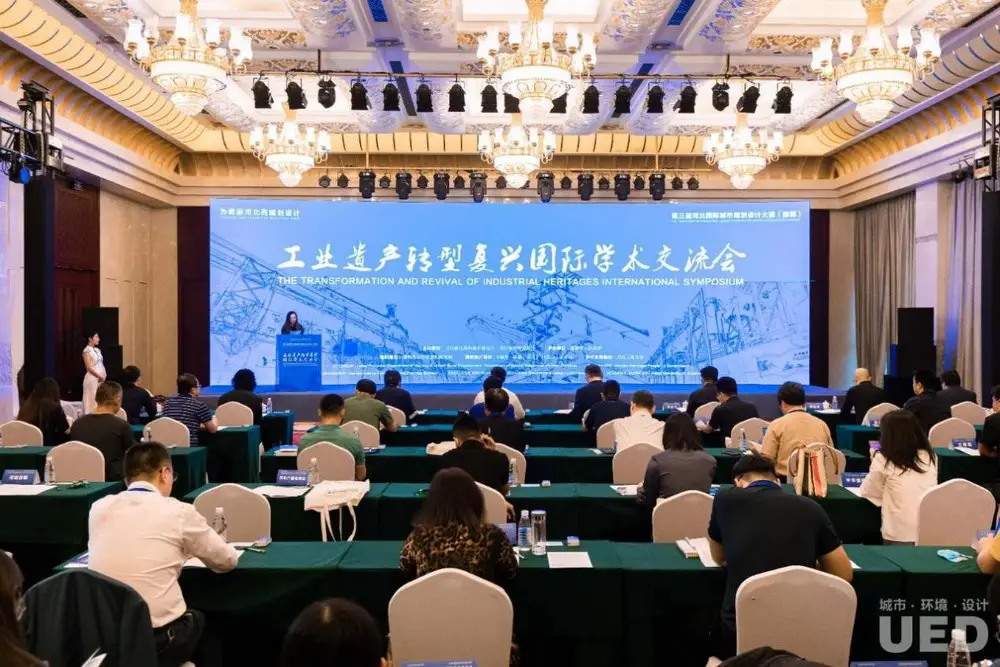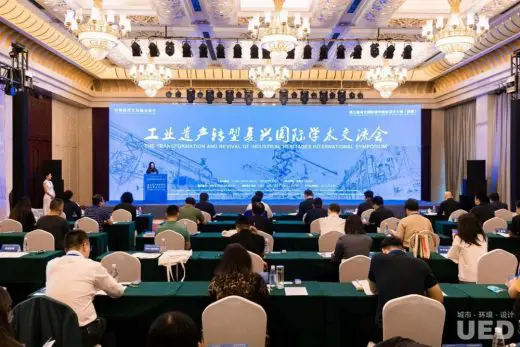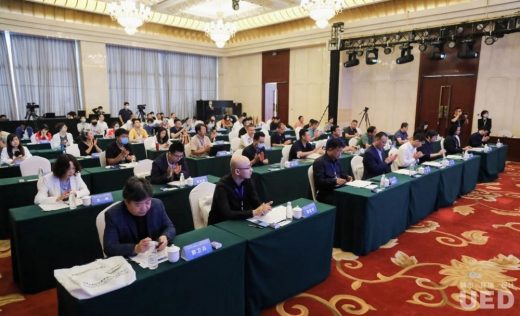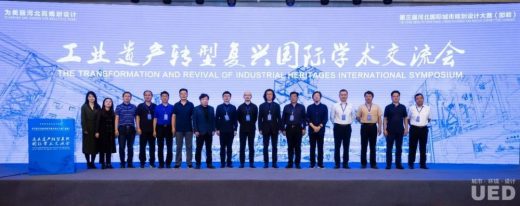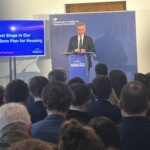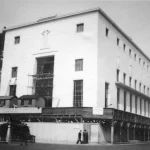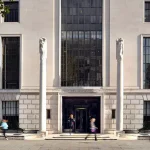Third Hebei International Urban Planning and Design Competition Symposium, Architecture, Building News
Resurgence the Cultural Heritage Symposium
19 Oct 2020
Resurgence the Cultural Heritage International Symposium
“Resurgence the Cultural Heritage!” The International Symposium on Industrial Heritage Transformation and Revival was successfully held in Handan.
On 26th of September, 2020, The Third Hebei International Urban Planning and Design Competition Symposium officially opened in Handan. This symposium is an important part of The Third Hebei International Urban Planning and Design Competition (Handan) and a continuation of the “The Transformation and Revival of Industrial Heritages” Hangang District Urban Design International Master Competition.
Focusing on the theme of Transformation and Revival of Industrial Heritages, the Symposium invited several famous experts and scholars, including Masters and team representatives, to give keynote speeches and symposiums. In the context of globalization and modernization, the Symposium comprehensively examined and discussed the spatial value and creation of industrial heritages, so as to explore the evolution mode of common prosperity for Handan and even future Chinese cities, as well as creative and practical ideas and prospects.
The conference was sponsored by the Hebei Provincial Department of Housing & Urban-Rural Development and Department of Natural Resources of Hebei Province; Organized by the Handan Municipal People’s Government; co-organized by Handan Natural Resources and Planning Bureau; executed and planned by Urban Environment Design (UED) Magazine, with Hebei University of Engineering as the academic support. In the post-epidemic era, the conference is carried out through the combination of online and offline and live broadcast is also available.
The symposium invited Dominique Perrault, French architecture icon; Peter Latz, German landscape architect; Steven Bee, former president of the Academy of Urbanism(UK); Wang Jianguo, academician of the Chinese Academy of Engineering; Zhu Yufan, professor of Tsinghua University School of Architecture; and Bo Hongtao, board member and chief architect of China United Zhujing Architecture Design co.,ltd; Wu Yaodong, chief architect of Architectural Design & Research Institute of Tsinghua University; LI Kuang, deputy president of Full-Process Consulting and Design Branch, Architectural Design and Research Institute of Tsinghua University; Zhang Jinjiang, vice president of Hebei University of Engineering and Guo Weibing, president and chief architect of Hebei Institute of Architectural Design & Research co.,ltd.
Combining with the final achievement of Hangang District Urban Design International Master Competition,Keynote speeches and seminars achievement from symposium will work as critical information as the methods and paths of transformation and revival of old industrial zones in Handan.
The symposium shared forward-looking concepts and classic cases to make industrial heritage a place of urban revival in the context of the post-industrial era, while focusing on the opportunities of the new era of urbanization and exploring how to maximize the spatial value of industrial heritage as well as providing systematic paths for urban transformation and development.
The leaders of Hebei Provincial Government fully affirmed the achievements of Master Competition and International Symposium, and highly appraised that the Symposium would bring brand-new urban planning and design concepts as well as cutting-edge academic ideas for cities in Hebei, and contribute to building a dynamic and characteristic modern city as well as construction of beautiful Hebei which is strong in economy.
Keynote Speeches
BO Hongtao
Value of Brownfield: Site From Point to Surface, Momentum of Sustainable Regeneration
Mr. Bo Hongtao started from the concept of urban renewal, deeply analyzed the value of industrial heritages focusing on topic of Industrial Remains Regeneration, and especially emphasized the significance of industrial heritages in the humanistic level. Based on the reconstruction project of Shougang, Mr. Bo expounded the influence of “Major Event” on the renewal of industrial heritages, put forward the concept of Urban Acupuncture, Anchor building to reconstruct the industrial heritages, and further explain the concept combining with the specific case of Shougang.
Based on analysis and research of one single building, the careful design on reconstruction could give new life functions to the building and give full play to its value, which could be regarded as the anchor point to promote development and transformation of surrounding areas. The method could not only activate spontaneous transformation of urban space, but also realize sustainable urban development in the way of gradual renewal.
LI Kuang
Methods and Paths of Transformation and Revival of Urban Old Industrial Areas
Mr. Li Kuang interpreted the historical background regarding transformation of western industrial heritages, which led to the particularity and urgency of transformation for China’s industrial heritages. A series of characteristics of China’s industrial heritages were analyzed, such as complete functional categories, short construction time, large-scale park areas, still available for use and closely combined with the city.
Mr. Li believed that the revival should be divided into regions, districts and single buildings from the physical scale, and the concept of hierarchical restoration with four different levels for revival was put forward, mainly including cultural preservation, integrity, structure and single building. Then he elaborated ideas on the revival of industrial heritages, including combination exploitation with protection, correction on restoration tendency of polarization and promotion on integrated revival.
Finally, Mr. Li put forward a set of his unique design system regarding the specific design methods, which was divided into eight stages, including historical research, detailed investigation, accurate evaluation, scientific planning, precise design, collaborative implementation, efficient operation and integrated revival. Combined with specific cases, the key points of each stage were explained in details as well. Through promoting the method, Mr. Li hoped to systematize and standardize the revival design, so as to explore the most scientific development mode.
WANG Jianguo
Protection and Regeneration of Industrial Historical Buildings
Combined with the case analysis on Wuxianmen Power Plant in Guangzhou, coal mines in Ruhr area in Germany, and interpretation on design schemes of Hangang District Urban Design International Master Competition, Academician Wang Jianguo explored on the topic of Protection and Regeneration of Industrial Historical Buildings. He believed that the protection and transformation of industrial historical buildings would need to follow certain logic to avoid simple and arbitrary demolition.
Meanwhile, he elaborated four thoughts on the transformation of industrial heritages. Firstly, government should encourage multiple parties to participate, as well as give priority to planning and design. Secondly, the difficulty and uncertainty on protection of industrial historical sites should be correctly understood.
Thirdly, the technical platform of urban design should be established, so as to coordinate the relationship between development and renewal of urban protection, properly handle the relationship among protection and development, protection and construction, protection and utilization, protection and restoration, etc. On such basis, reasonable and appropriate countermeasures could be formulated. Last but not the least, the transition function should be introduced to realize the integrated and compound functions of land in the transformation of industrial areas, enhance the urban vitality, and take the market as orientation to achieve final goals step by step.
ZHU Yufan
Post Industrial Context and Landscape Design
Can the post industrial lands be regarded as historical and cultural heritages? If so, how should we preserve and renewal accordingly? What is the role of landscape in the renewal of post industrial lands? Embodied with the above questions and willingness to explore the answers, Professor Zhu Yufan discussed the definition of brownfield site, the centralization and recombination of industrial land development, and the acceptance of landscape heterogeneity by different groups of people through mature cases on the transformation of industrial heritages.
As one of the leading exports of landscape design discipline in China, Professor Zhu proposed that industrial heritage landscape would inevitably become the combination of industrial heritage buildings, landscape and newly built structures. However, such heterogeneous landscape could not be accepted by all.
The main responsibility of landscape architects was to collocate all these elements into compatibility. Chinese landscape architects tended to the subject compatibility, aiming at integration of different elements and preservation of their own characteristics. Hence it could be seen that the post industrial landscape design and reuse of brownfield site would be very complex, time and money consuming, even thoughts and feelings needed.
Steven Bee
Balancing Restoration with Adaptation and Innovation
Mr. Bee started from the historical value of industrial heritages, illustrating that these heritages could show us the evolution process of human history and civilization, and from the evolution, people could increase their understanding of state and national civilization. Some industrial buildings seemed ordinary, while actually they contained significant historical value.
Mr. Bee explained another value of industrial heritages, namely the humanistic value. He believed that through the protection and renewal of industrial heritages, contemporary people could better understand or recall the ideas and activities of the predecessors when using the buildings, which shall make the industrial heritages become a natural museum. At the same time, industrial heritages also embodied the wealth of reuse value.
Compared with construction of a new building, the economic cost of old building renewal and reuse would be far different. However, industrial heritages also encountered many difficulties. For example, the memories carried by the industrial buildings were not always wonderful, and the left industrial pollution might cause health problems, which would arouse a lot of time and economic costs. Therefore, Mr. Bee believed that we should remain objective and rational regarding the design on the transformation and renewal of industrial heritages, take a long-term view and constantly stimulate our innovation ability, in order to better achieve sustainable development.
Dominique Perrault
Building the City on the Brownfield: The Industrial Heritage as a New Productive Landscape
Dominique Perrault, the French architecture icon, made a speech based on the winning scheme of “The Transformation and Revival of Industrial Heritages” – Hangang District Urban Design International Master Competition. He addressed the transformation of industrial heritages to new productive landscape focusing on the construction of urban brownfield site, and further discussed the future development direction and strategy on the transformation and revival of industrial heritages.
Regarding the complicated and long process of brownfield site renewal, Mr. Perrault created an adaptive urban design toolbox for Hangang District. On the theoretical basis, the city could be modularized according to different calculation parameters, and the roads, blocks, buildings and public space within the site could be planned, zoned and re-integrated, which would have more free, flexible and changeable independent characteristics.
Peter Latz
Industrial Heritage: Places for the Future
Mr. Latz analyzed the urban revival of industrial heritages from six perspectives based on the transformation cases of industrial heritages in various countries. Firstly, he believed that the combination of far and near landscape and design had great influence on the site.
While the outward information provided by the surrounding environment could attract tourists from the far landscape, the near landscape needed to provide enough information to produce the same attraction. Taking the plant as an example, the space under the blast furnace should provide necessary functions and activity places to attract tourists while tourists were attracted by the blast furnace.
Secondly, in view of the chaos and transformation made by disorderly urban development, he thought that it was unnecessary to reset the site with a new order, but a planning system that could make it understandable and enjoyable. He then mentioned that water was such an important part of the ecosystem that in some cases it could be the theme of a whole project.
Regarding the natural ecology and landscape, he believed that the wild disordered natural landscape could present different appearance in different seasons, which highlighted the diversity of plants. Meanwhile, he pointed out that the transformation of building materials and urban texture could totally transform the oppressed space. Lastly, he believed that the tourists’ degree of preference was one important criteria for the success of the transformation.
Discussion Session
Based on the speeches given by the guests in the morning, the seminar reviewed the history and culture of Handan as well as development process of Hangang, discussed the implementable schemes on transformation of Hangang District based on the existing research results, and put forward professional suggestions on how to drive the urban revival of Handan by the transformation of Hangang.
On the morning of September 27th, attending guests of the symposium visit the final achievement exhibition in Fuxing park of the Garden Exposition Park, as well as Qinhe Country Park, Jiangou Museum and other critical nodes.
Visit the Competition Achievement Exhibition in the Garden Expo © UED
Resurgence the Cultural Heritage International Symposium image / information received 191020
Architectural Design
Contemporary Architecture
Design: Peter Morris Architects
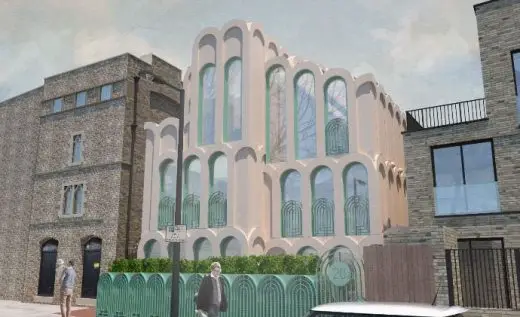
image courtesy of architects practice
The Cloud House in Gospel Oak
Morden Wharf, Greenwich Peninsula, south east London
Design: OMA
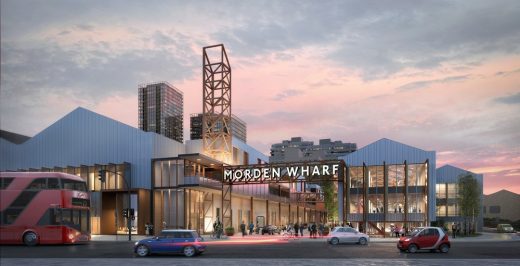
image : Pixelflakes
Morden Wharf Development
Comments / photos for the Resurgence the Cultural Heritage International Symposium page welcome

